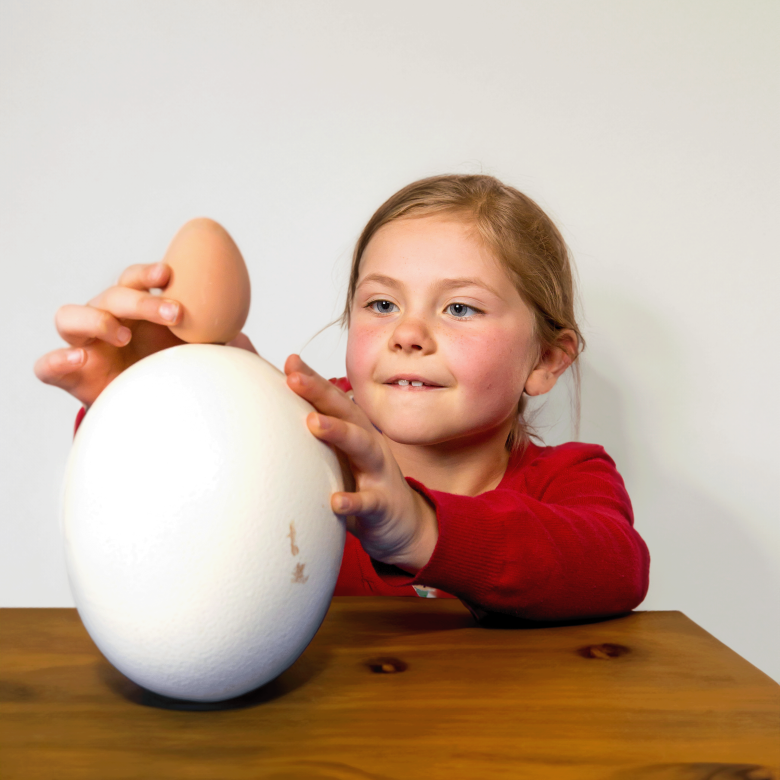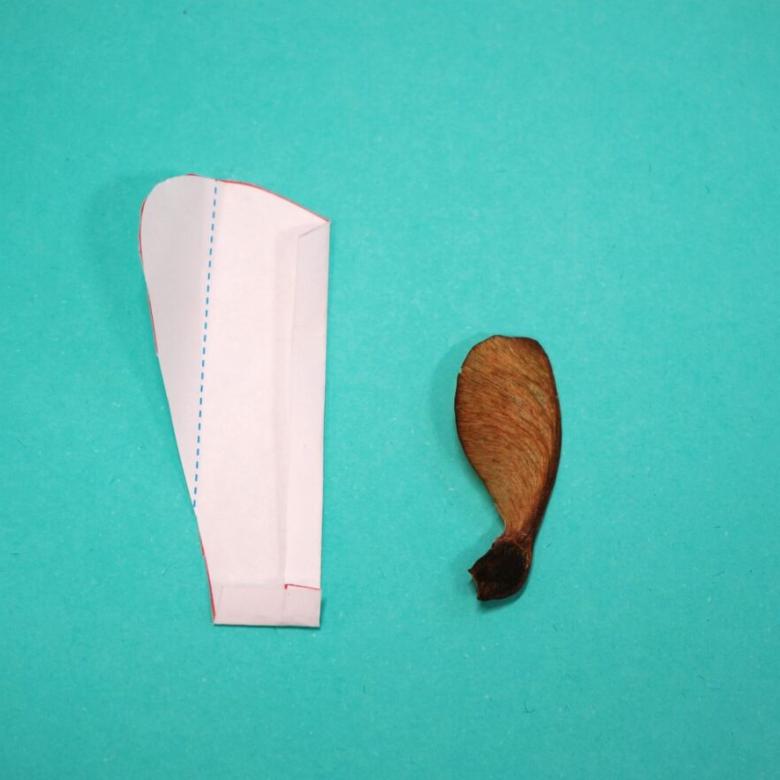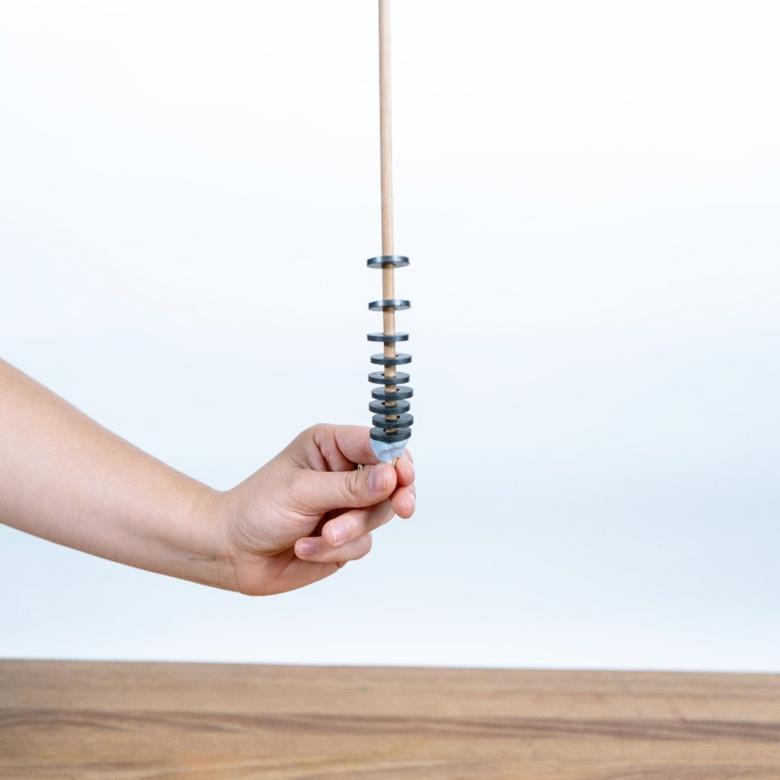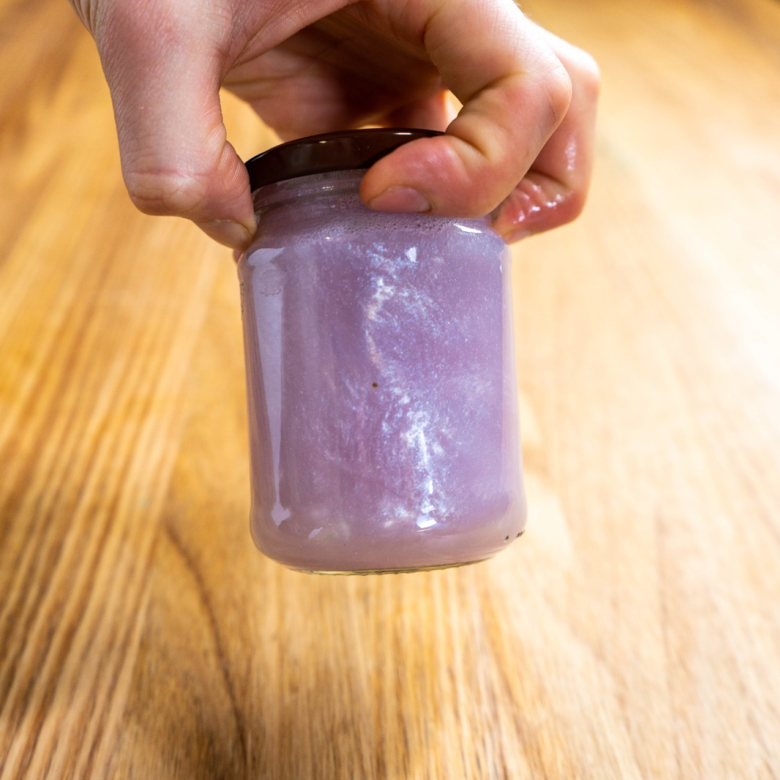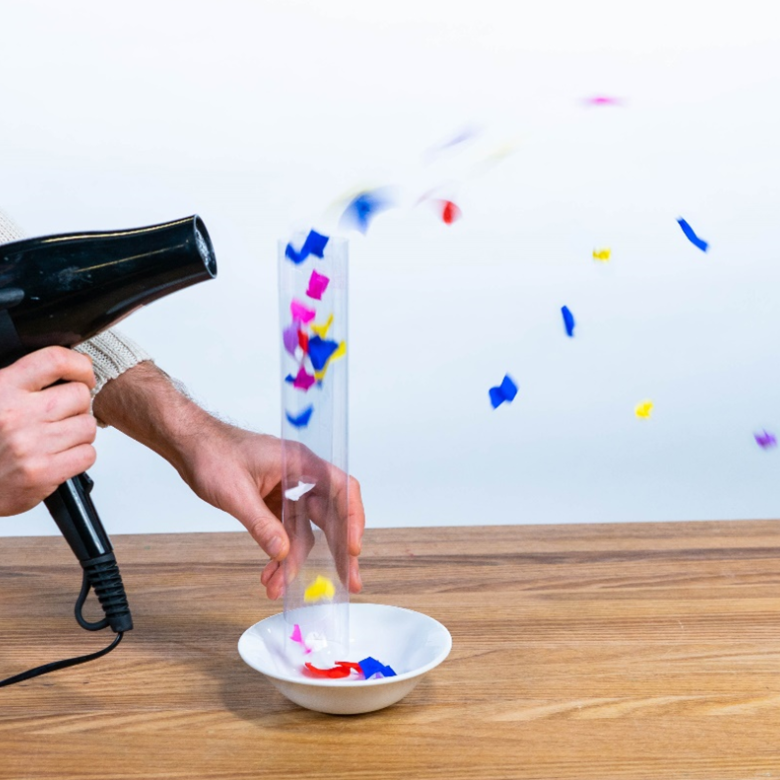You'll need
- A small sticker or piece of coloured tape
- A piece of string about 2 m long
- A plastic plate
- A plastic or wooden ruler
- A 2 litre plastic bottle, half-filled with water
- Some small, non-breakable items, like plush toys and plastic blocks, spoons and bottles
- A cardboard tube
- Sticky tape
- A coathanger with clips
- 2 resealable plastic bags
- Somewhere to hang the coathanger, like a doorknob or a clothes rack
- A tall mirror (optional)
What to do
- Stand balanced on 2 legs. Keeping your feet still, try leaning over sideways, then move from side to side.
- Lift up one leg and balance. Try leaning over from side to side again. Can you notice a difference?
- Now, place the piece of string in a straight line on the floor. Try walking along it, placing one foot in front of the other. What do you notice?
- Now, take the plastic plate and hold it in your open hand, like a waiter holding a plate. Place the small objects in the centre of the plate. Try walking while holding the plate like a waiter. Move the objects to the edge of the plate, and try walking again.
- Now, try balancing different objects on your open hand. Try balancing an empty plastic cup. Can you balance it on its bottom? How about on its side?
- Now, take your ruler and balance it on a tower of blocks or the bottle. Move the ruler around until it doesn’t fall off.
- Balance the ruler on top of the bottle. Place a block on one side of the ruler. What happens? Move the ruler around until it balances.
- Now, try using differently shaped objects – for example, try balancing a plush toy on the top of the plastic bottle.
- To build a seesaw for your toys, take the cardboard tube and flatten it a little on one side. Tape the middle of the ruler to the tube opposite the flattened side – this is your seesaw. Set your seesaw on the floor on the flattened side. Place different toys on each side of the ruler and watch what happens.
- To make a set of scales, clip a resealable bag to each clip on the coathanger. Hang your scales on a doorknob or a clothes rack.
- Use the scales to see which of your toys is the heaviest. Put your heaviest toy in one bag and another, lighter toy in the other bag. The heavier toy should hang lower.
- Leave your heavy toy in one bag. Try balancing it with several lighter toys on the other side.
Questions to ask
What happens if you lean over sideways when standing on 2 legs? What happens to your feet?
Is standing on one leg harder than standing on 2 legs? Try standing on your left leg, then on your right leg. Is it easier to balance on one leg than the other? If you can do this in front of a mirror, place the sticker or piece of coloured tape on your belly button and watch it in the mirror. Where is it when you are balanced? Where is it when you are not balanced?
What happens when you move the toys from the centre of the plastic plate to the edge? Try moving some to the edge while keeping some toys in the centre.
How hard is it to balance a ruler on the top of a bottle? Experiment with moving the ruler around. Try to balance things that are heavier on one side, like a spoon or a brush, on the bottle or block. Move each object around until it balances.
When you balance different-shaped toys, which toys are harder to balance on the bottle?
How do you balance toys on your seesaw? Try using more toys on one side. Try moving the heavier toy towards the middle of the seesaw until both sides are balanced.
When using your coathanger scales, first guess which toy is the heaviest, then check by hanging it on one side and other toys one by one on the other. Did it hang lower than any other toy? Try to find which toy is your lightest toy. How can you tell?
Using your coathanger scales, can you balance the weight of your heaviest toy with several lighter toys? How many toys did it take to balance out the weight of your heaviest toy?
What's happening
When things balance, they are steady and don’t fall. Everything has a centre of balance, where there is the same amount of weight on all sides. To balance something, you must support it at its centre of balance, or it will fall. For any weight on one side, there must be a balancing weight on the other side. This is called counterbalance.
Your own centre of balance is about where your bellybutton is. Balancing on 2 legs is easier than balancing on one leg. This is because there is only a small part of you touching the ground when you are standing on one foot. It’s harder to keep your centre of balance above your foot. You can see this by the way the sticker on your bellybutton moves around when you are standing on one foot.
The idea of centre of balance is also shown by the other exercises:
- For the plate, the centre of balance is the middle of the plate that is sitting on the palm of your hand. When you move objects to the edge, the balance tips and the plate falls.
- For the ruler on the blocks or bottle, the centre of balance is the middle of the ruler. If you put a small weight, like a small block, on one end of the ruler, you can make it balance by moving the support away from the centre of the ruler and towards the block. When you do that, the longer part of the ruler balances the shorter part with the block.
- For the seesaw, the centre of balance is the cardboard tube. To balance the seesaw, you need equal weights on both sides of the seesaw, at equal distances from the middle. If one weight is heavier than the other, should it be closer to the middle or further away to get the seesaw to balance? Make a prediction, then test it.
- For the coathanger scale, the centre of balance is the centre of the coathanger. It tips to one side if that side has heavier toys in the ziplock bags.
For things that aren’t flat, it’s hard to tell where the centre of balance is. You might find that it’s harder to balance a soft toy or a toy car on a plastic bottle. You might need to move the toys around many times before you can balance them.

